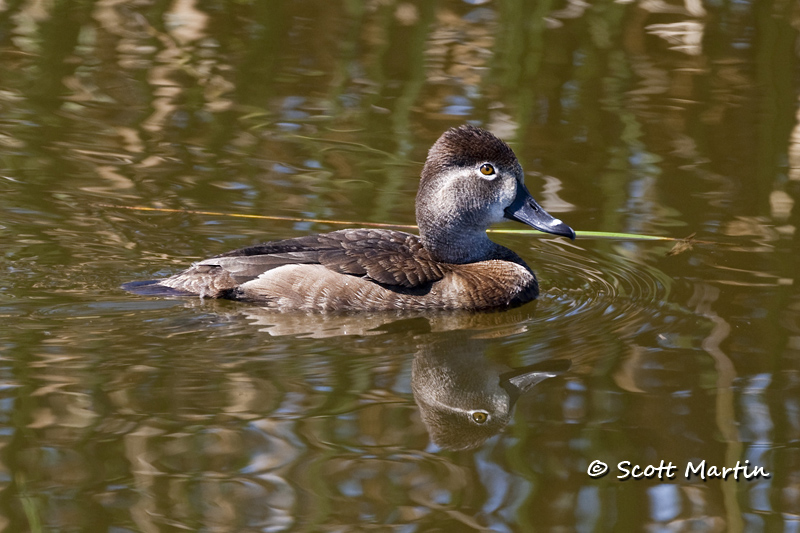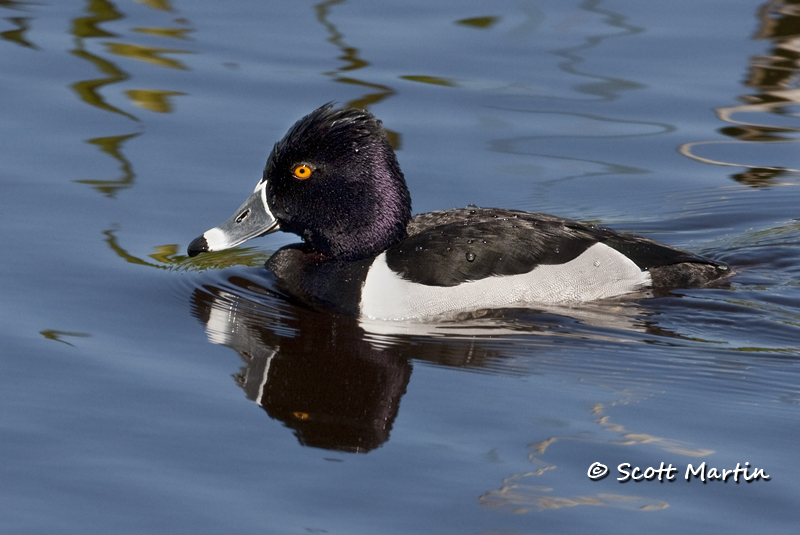The medium-sized Ring-necked Duck is a common duck that breeds in the Northern United States and Canada and migrates to the Southern United States during the winter months although it has been found in western Europe, Costa Rica and Central America on occasion. This duck prefers fresh water lakes, ponds & rivers however has been seen on salt water bodies in the south. The Ring-necked duck is a diver whose diet consists of plants, mollusks, insects and small fish.
The Ring-necked Duck was first described in 1809 and was named for its chestnut neck ring, which is rarely seen except at close range. One of the most noticeable field marks of this duck is its prominent white bill ring so perhaps this duck would be better known as a Ring-billed Duck!
The Ring-necked duck does not associate in large flocks hence they are often only seen in pairs. They are prolific egg layers with anywhere from six to fourteen eggs laid which are then incubated by the female for approximately one month while the male brings food to the nest.
This first image is of a female.

Here is the male.

I apologize for the rather high angle these images were taken from, however the fairly steep banks along the ponds at the Viera Wetlands (and the gators) don’t allow one to get as low to the water as one would like.
Lastly, for those of you follow this blog regularly, I’m trying something new. The first mention of a bird in this and future blog posts will be in bold and if you hover over the name in bold with your mouse, the scientific name of the bird will be displayed in a gray text box. I’m teaching myself HTML & CSS with the hope of providing a better blog experience when you stop by this site.


The ringed-neck ducks are on my ‘hit list’ as I have never seen one let alone taken its picture. A very pretty duck especially with the golden eye. The high angle allows us to see more of the duck and only purists will take notice. I really like these images and nice work on the HTML and CSS, I hope the extra effort pays off!
Thanks Arni and this was the first time Deb & I had ever seen them.